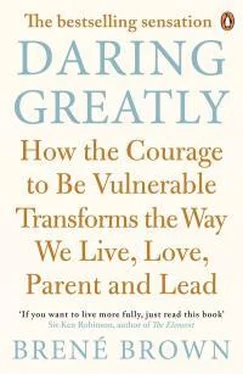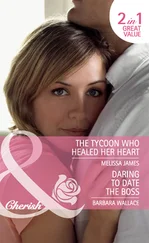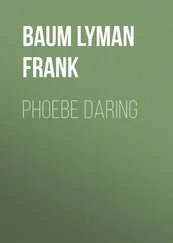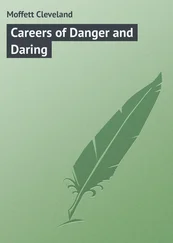How do we own and engage with vulnerability so we can start transforming the way we live, love, parent, and lead?
Introduction
My Adventures in the Arena
I looked right at her and said, “I frickin’ hate vulnerability.” I figured she’s a therapist—I’m sure she’s had tougher cases. Plus, the sooner she knows what she’s dealing with, the faster we can get this whole therapy thing wrapped up. “I hate uncertainty. I hate not knowing. I can’t stand opening myself to getting hurt or being disappointed. It’s excruciating. Vulnerability is complicated. And it’s excruciating. Do you know what I mean?”
Diana nods. “Yes, I know vulnerability. I know it well. It’s an exquisite emotion.” Then she looks up and kind of smiles, as if she’s picturing something really beautiful. I’m sure I look confused because I can’t imagine what she’s picturing. I’m suddenly concerned for her well-being and my own.
“I said it was excruciating, not exquisite, ” I point out. “ And let me say this for the record, if my research didn’t link being vulnerable with living a Wholehearted life, I wouldn’t be here. I hate how it makes me feel.”
“What does it feel like?”
“Like I’m coming out of my skin. Like I need to fix whatever’s happening and make it better.”
“And if you can’t?”
“Then I feel like punching someone in the face.”
“And do you?”
“No. Of course not.”
“So what do you do?”
“Clean the house. Eat peanut butter. Blame people. Make everything around me perfect. Control whatever I can—whatever’s not nailed down.”
“When do you feel the most vulnerable?”
“When I’m in fear.” I look up as Diana responds with that annoying pause and head-nodding done by therapists to draw us out. “When I’m anxious and unsure about how things are going to go, or if I’m having a difficult conversation, or if I’m trying something new or doing something that makes me uncomfortable or opens me up to criticism or judgment.” Another annoying pause as the empathic nodding continues. “When I think about how much I love my kids and Steve, and how my life would be over if something happened to them. When I see the people I care about struggling, and I can’t fix it or make it better. All I can do is be with them.”
“I see.”
“I feel it when I’m scared that things are too good. Or too scary. I’d really like for it to be exquisite, but right now it’s just excruciating. Can people change that?”
“Yes, I believe they can.”
“Can you give me some homework or something? Should I review the data?”
“No data and no homework. No assignments or gold stars in here. Less thinking. More feeling.”
“Can I get to exquisite without having to feel really vulnerable in the process?”
“No.”
“Well, shit. That’s just awesome.”
If you don’t know anything about me from my other books, my blog, or the TED videos that have gone viral online, let me catch you up. If, on the other hand, you’re already a little queasy from the mention of a therapist, skip this chapter entirely and go straight to the appendix about my research process. I have spent my entire life trying to outrun and outsmart vulnerability. I’m a fifth-generation Texan with a family motto of “lock and load,” so I come by my aversion to uncertainty and emotional exposure honestly (and genetically). By middle school, which is the time when most of us begin to wrestle with vulnerability, I began to develop and hone my vulnerability-avoidance skills.
Over time I tried everything from “the good girl” with my “perform-perfect-please” routine, to clove-smoking poet, angry activist, corporate climber, and out-of-control party girl. At first glance these may seem like reasonable, if not predictable, developmental stages, but they were more than that for me. All of my stages were different suits of armor that kept me from becoming too engaged and too vulnerable. Each strategy was built on the same premise: Keep everyone at a safe distance and always have an exit strategy.
Along with my fear of vulnerability, I also inherited a huge heart and ready empathy. So, in my late twenties, I left a management position at AT&T, got a job waiting tables and bartending, and went back to school to become a social worker. When I met with my boss at AT&T to resign, I’ll never forget her response: “Let me guess. You’re leaving to become a social worker or an MTV VJ on Headbanger’s Ball ?”
Like many of the folks drawn to social work, I liked the idea of fixing people and systems. By the time I was done with my bachelor’s degree (BSW) and was finishing my master’s degree (MSW), though, I had realized that social work wasn’t about fixing. It was and is all about contextualizing and “leaning in.” Social work is all about leaning into the discomfort of ambiguity and uncertainty, and holding open an empathic space so people can find their own way. In a word— messy.
As I struggled to figure out how I could ever make a career in social work actually work, I was riveted by a statement from one of my research professors: “If you can’t measure it, it doesn’t exist.” He explained that unlike our other classes in the program, research was all about prediction and control. I was smitten. You mean that rather than leaning and holding, I could spend my career predicting and controlling? I had found my calling.
The surest thing I took away from my BSW, MSW, and Ph.D. in social work is this: Connection is why we’re here. We are hardwired to connect with others, it’s what gives purpose and meaning to our lives, and without it there is suffering. I wanted to develop research that explained the anatomy of connection.
Studying connection was a simple idea, but before I knew it, I had been hijacked by my research participants who, when asked to talk about their most important relationships and experiences of connection, kept telling me about heartbreak, betrayal, and shame—the fear of not being worthy of real connection. We humans have a tendency to define things by what they are not. This is especially true of our emotional experiences.
By accident, then, I became a shame and empathy researcher, spending six years developing a theory that explains what shame is, how it works, and how we cultivate resilience in the face of believing that we’re not enough—that we’re not worthy of love and belonging. In 2006 I realized that in addition to understanding shame, I had to understand the flip side: “What do the people who are the most resilient to shame, who believe in their worthiness—I call these people the Wholehearted—have in common?”
I hoped like hell that the answer to this question would be: “They are shame researchers. To be Wholehearted, you have to know a lot about shame.” But I was wrong. Understanding shame is only one variable that contributes to Wholeheartedness, a way of engaging with the world from a place of worthiness. In The Gifts of Imperfection, I defined ten “guideposts” for Wholehearted living that point to what the Wholehearted work to cultivate and what they work to let go of:
Cultivating Authenticity: Letting Go of What People Think
Cultivating Self-Compassion: Letting Go of Perfectionism
Cultivating a Resilient Spirit: Letting Go of Numbing and Powerlessness
Cultivating Gratitude and Joy: Letting Go of Scarcity and Fear of the Dark
Cultivating Intuition and Trusting Faith: Letting Go of the Need for Certainty
Cultivating Creativity: Letting Go of Comparison
Cultivating Play and Rest: Letting Go of Exhaustion as a Status Symbol and Productivity as Self-Worth
Cultivating Calm and Stillness: Letting Go of Anxiety as a Lifestyle
Читать дальше






![Брене Браун - Вопреки. Как оставаться собой, когда всё против тебя [litres]](/books/436389/brene-braun-vopreki-kak-ostavatsya-soboj-kogda-v-thumb.webp)





